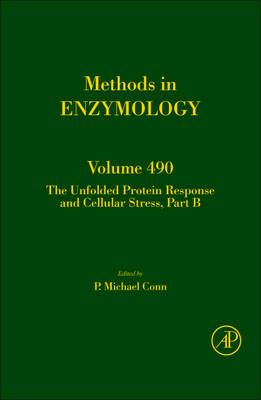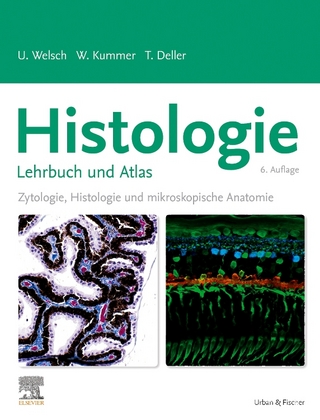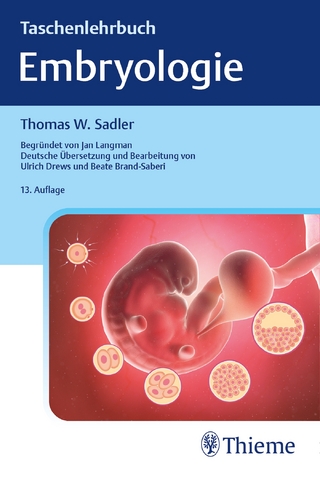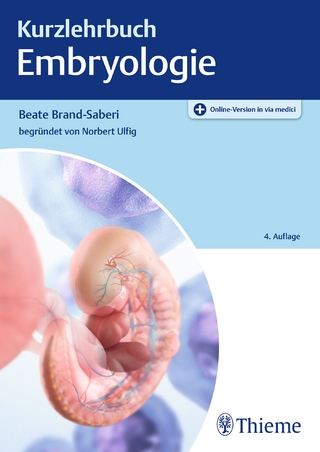
The Unfolded Protein Response and Cellular Stress, Part B
Academic Press Inc (Verlag)
978-0-12-385114-7 (ISBN)
This volume provides descriptions of the occurrence of the UPR, methods used to assess it, pharmacological tools and other methodological approaches to analyze its impact on cellular regulation. The authors explain how these methods are able to provide important biological insights.
P. Michael Conn is the Senior Vice President for Research and Associate Provost, Texas Tech Health Sciences Center. He is The Robert C. Kimbrough, Professor of Internal Medicine and Cell Biology/Biochemistry. He was previously Director of Research Advocacy and Professor of Physiology and Pharmacology, Cell Biology and Development and Obstetrics and Gynecology at Oregon Health and Science University and Senior Scientist of the Oregon National Primate Research Center (ONPRC). He served for twelve years as Special Assistant to the President and Associate Director of the ONPRC. After receiving a B.S. degree and teaching certification from the University of Michigan (1971), a M.S. from North Carolina State University (1973), and a Ph.D. degree from Baylor College of Medicine (1976), Conn did a fellowship at the NIH, then joined the faculty in the Department of Pharmacology, Duke University Medical Center where he was promoted to Associate Professor in 1982. In 1984, he became Professor and Head of Pharmacology at the University of Iowa College of Medicine, a position he held for eleven years. Conn is known for his research in the area of the cellular and molecular basis of action of gonadotropin releasing hormone action in the pituitary and therapeutic approaches that restore misfolded proteins to function. His work has led to drugs that have benefitted humans and animals. Most recently, he has identified a new class of drugs, pharmacoperones, which act by regulating the intracellular trafficking of receptors, enzymes and ion channels. He has authored or co-authored over 350 publications in this area and written or edited over 200 books, including texts in neurosciences, molecular biology and endocrinology. Conn has served as the editor of many professional journals and book series (Endocrinology, Journal of Clinical Endocrinology and Metabolism, Endocrine, Methods, Progress in Molecular Biology and Translational Science and Contemporary Endocrinology). Conn served on the National Board of Medical Examiners, including two years as chairman of the reproduction and endocrinology committee. The work of his laboratory has been recognized with a MERIT award from the NIH, the J.J. Abel Award of the American Society for Pharmacology and Experimental Therapeutics, the Weitzman, Oppenheimer and Ingbar Awards of the Endocrine Society, the National Science Medal of Mexico (the Miguel Aleman Prize) and the Stevenson Award of Canada. He is the recipient of the Oregon State Award for Discovery, the Media Award of the American College of Neuropsychopharmacology and was named a distinguished Alumnus of Baylor College of Medicine in 2012. Conn is a previous member of Council for the American Society for Cell Biology and the Endocrine Society and is a prior President of the Endocrine Society, during which time he founded the Hormone Foundation and worked with political leadership to heighten the public’s awareness of diabetes. Conn’s students and fellows have gone on to become leaders in industry and academia. He is an elected member of the Mexican Institute of Medicine and a fellow of the American Association for the Advancement of Science. He is the co-author of The Animal Research War (2008) and many articles for the public and academic community on the value of animal research and the dangers posed by animal extremism. His op/eds have appeared in The Washington Post, The LA Times, The Wall Street Journal, the Des Moines Register, and elsewhere. Conn consults with organizations that are influenced by animal extremism and with universities and companies facing challenges from these groups.
Section I: Measuring and Modifying the UPR
Methods for investigating the UPR in filamentous fungi Thomas Guillemette, Arthur F.J. Ram, Neuza D.S.P. Carvalho, Aymeric Joubert, Philippe Simoneau, David B. Archer
Assays for detecting the unfolded protein response Karen Cawley, Shane Deegan, Afshin Samali, Sanjeev Gupta
Analysis of the role of nerve growth factor in promoting cell survival during endoplasmic reticulum stress in PC12 cells Koji Shimoke , Harue Sasaya, and Toshihiko Ikeuchi
Measuring ER stress and the unfolded protein response using mammalian tissue culture system Christine M. Oslowski and Fumihiko Urano
Real-Time Monitoring of Er Stress in Living Cells And Animals Using Estrap Assay Masanori Kitamura and Nobuhiko Hiramatsu
HIV protease inhibitors induce endoplasmic reticulum stress and disrupt barrier integrity in intestinal epithelial cells Huiping Zhou
Dexamethasone induction of a heat-stress response José A. Guerrero, Vicente Vicente, Javier Corral
Detecting and Quantitating Physiological Endoplasmic Reticulum Stress Ling Qi, Liu Yang and Hui Chen Section II: Molecular Components of the UPR
PI 3-Kinase Regulatory Subunits as Regulators of the Unfolded Protein Response Jonathon N. Winnay and C. Ronald Kahn
The Emerging Role of Histone Deacetylases (HDACs) in UPR regulation Soumen Kahali, Bhaswati Sarcar & Prakash Chinnaiyan
Immunohistochemical detection of Activating Transcription Factor 3, a hub of the cellular adaptive-response network Tsonwin Hai, Swati Jalgaonkar, Christopher C. Wolford, and Xin Yin
Experimental approaches for elucidation of stress-sensing mechanisms of the Ire1 family proteins Daisuke Oikawa and Yukio Kimata
Measurement and Modification of the Expression Level of the Chaperone Protein and Signaling Regulator GRP78/BiP in Mammalian Cells Wan-Ting Chen and Amy S. Lee
The Endoplasmic Reticulum associated degradation and disulfide reductase ERdj5 Ryo Ushioda and Kazuhiro Nagata
Structural Insight into the Protective Role of P58(IPK) during Unfolded Protein Response Jiahui Tao, Bingdong Sha
Principles of IRE1 modulation using chemical tools Kenneth P. K. Lee and Frank Sicheri
Methods to study stromal-cell derived factor 2 in the context of ER stress and the unfolded protein response in Arabidopsis thaliana Andrea Schott & Sabine Strahl
Nitrosative stress-induced S-glutathionylation of protein disulfide isomerase Joachim D. Uys, Ying Xiong, and Danyelle M. Townsend
Methods for Analyzing eIF2 Kinases and Translational Control in the Unfolded Protein Response Brian F. Teske, Thomas D. Baird, and Ronald C. Wek
| Erscheint lt. Verlag | 14.3.2011 |
|---|---|
| Reihe/Serie | Methods in Enzymology |
| Verlagsort | San Diego |
| Sprache | englisch |
| Maße | 152 x 229 mm |
| Gewicht | 880 g |
| Themenwelt | Studium ► 1. Studienabschnitt (Vorklinik) ► Histologie / Embryologie |
| Studium ► 1. Studienabschnitt (Vorklinik) ► Physiologie | |
| ISBN-10 | 0-12-385114-9 / 0123851149 |
| ISBN-13 | 978-0-12-385114-7 / 9780123851147 |
| Zustand | Neuware |
| Haben Sie eine Frage zum Produkt? |
aus dem Bereich


